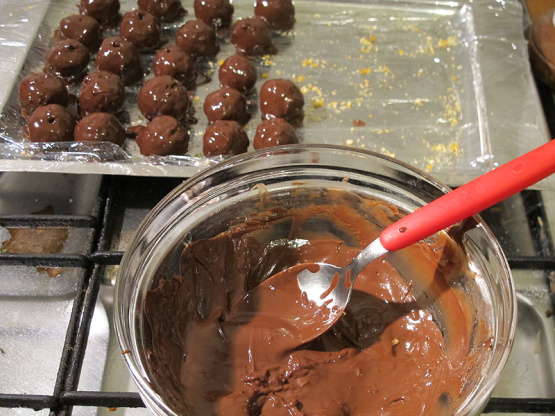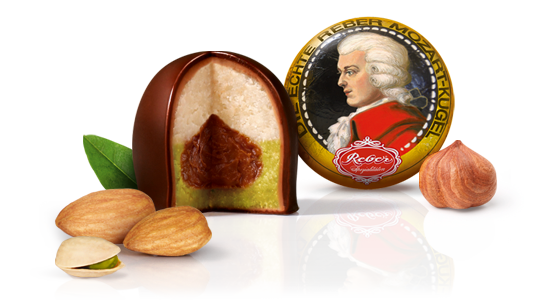Mozartkugeln
mozart kugeln, Mozart balls
A Mozartkugel is a small, round sugar confection made of pistachio, marzipan, and nougat that is covered with dark chocolate. It was originally known as Mozart-Bonbon, created in 1890 by Salzburg confectioner Paul Fürst (1856–1941) and named after Wolfgang Amadeus Mozart. Handmade Original Salzburger Mozartkugeln are manufactured by Fürst's descendants up to today, while similar products have been developed by numerous confectioners, often industrially produced. Paul Fürst's family descended from Dinkelsbühl; he himself was born in Sierning, Upper Austria, and was raised in Salzburg. Upon the early death of his father, he lived in the house of his uncle, who owned a confectionery at No. 13, Brodgasse. Fürst took over his uncle's business and trained as an apprentice in Vienna, Budapest, Paris, and Nice. In 1884, he opened his own pastry shop at No. 13, Brodgasse, where he, by his own account, created the Mozart-Bonbon praline after lengthy trials in 1890. As his specialty became increasingly popular, Fürst established a company that continues to sell Mozartkugeln. However, he had not applied for a patent to protect his invention, and soon, other Salzburg cake shops began to sell similar products. The original recipe for Mozartkugeln is: A ball of marzipan combined with pistachio and covered in a layer of nougat is produced. This ball is then placed on a small wooden stick and coated in dark chocolate. The stick is then placed vertically, with the ball at the top, on a platform to allow the chocolate to cool off and harden. Finally, the stick is removed; the hole that it leaves behind is filled with chocolate coating, and the ball is wrapped in metal foil. The balls remain fresh for about eight weeks at room temperature.
Source: Wikipedia




